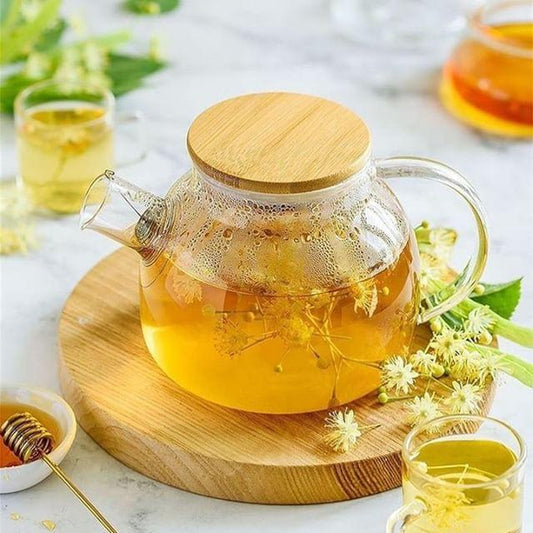Understanding Different Cooking Oils: Choosing the Right Oil for Each Dish

Cooking oils are an essential part of every kitchen, but with so many options available, it can be overwhelming to know which oil to use for a particular dish. From sautéing and frying to dressing salads, each oil has unique properties that make it suitable for different purposes. Here’s a guide to understanding the most common cooking oils and how to use them effectively.
1. Olive Oil
Types:
- Extra Virgin Olive Oil (EVOO): Unrefined, with a robust flavor and low smoke point.
- Regular Olive Oil: More refined, with a milder taste and higher smoke point.
Best For:
- EVOO: Salad dressings, drizzling over cooked dishes, dipping bread.
- Regular Olive Oil: Sautéing vegetables, light frying.
Smoke Point:
- EVOO: ~375°F (191°C)
- Regular Olive Oil: ~465°F (240°C)
Flavor:
Rich and fruity, perfect for Mediterranean dishes.
2. Canola Oil
Best For:
- Frying, baking, sautéing, and grilling. Its neutral flavor makes it a versatile choice for various cuisines.
Smoke Point:
~400°F (204°C)
Flavor:
Mild and neutral, allowing other ingredients to shine.
Health Benefits:
Low in saturated fats and high in omega-3 fatty acids.
3. Avocado Oil
Best For:
- High-heat cooking like grilling and roasting, as well as salad dressings and marinades.
Smoke Point:
~520°F (271°C)
Flavor:
Mild and buttery, complementing a variety of dishes.
Health Benefits:
Rich in monounsaturated fats and vitamin E.
4. Coconut Oil
Types:
- Refined: Neutral flavor and higher smoke point.
- Unrefined (Virgin): Distinct coconut flavor and aroma.
Best For:
- Baking, sautéing, and medium-heat frying. Unrefined coconut oil works well in tropical or dessert recipes.
Smoke Point:
- Refined: ~450°F (232°C)
- Unrefined: ~350°F (177°C)
Flavor:
Sweet and nutty, with a tropical coconut aroma (unrefined).
Health Benefits:
High in saturated fats, providing a stable option for cooking.
5. Vegetable Oil
Best For:
- Deep frying, baking, and everyday cooking. Its affordability and neutral flavor make it a kitchen staple.
Smoke Point:
~400°F (204°C)
Flavor:
Neutral, blending seamlessly into recipes.
Health Considerations:
Often a blend of oils like soybean, corn, and sunflower oil, it may be less healthy due to potential hydrogenation.
6. Sesame Oil
Types:
- Light Sesame Oil: Milder flavor, higher smoke point.
- Toasted Sesame Oil: Rich, nutty flavor, used as a finishing oil.
Best For:
- Light sesame oil: Stir-frying and frying.
- Toasted sesame oil: Drizzling over dishes, dipping sauces, and Asian-inspired recipes.
Smoke Point:
- Light: ~410°F (210°C)
- Toasted: ~350°F (177°C)
Flavor:
Distinct nutty taste, ideal for Asian dishes.
7. Peanut Oil
Best For:
- Deep frying, especially for dishes like tempura, fried chicken, and stir-fries.
Smoke Point:
~450°F (232°C)
Flavor:
Mild and nutty, enhancing fried and Asian dishes.
Health Benefits:
Rich in monounsaturated fats and stable under high heat.
8. Sunflower Oil
Best For:
- Frying, roasting, and salad dressings.
Smoke Point:
~440°F (227°C)
Flavor:
Light and neutral, suitable for subtle-flavored dishes.
Health Benefits:
High in vitamin E and low in saturated fats.
9. Grapeseed Oil
Best For:
- Salad dressings, sautéing, and light frying.
Smoke Point:
~420°F (216°C)
Flavor:
Mild and slightly nutty, with a clean taste.
Health Benefits:
Rich in polyunsaturated fats and antioxidants.
10. Butter and Ghee
Types:
- Butter: Adds rich, creamy flavor but has a lower smoke point.
- Ghee: Clarified butter with a higher smoke point.
Best For:
- Butter: Baking, low-heat sautéing, and adding flavor.
- Ghee: High-heat cooking, frying, and Indian dishes.
Smoke Point:
- Butter: ~300°F (150°C)
- Ghee: ~485°F (252°C)
Flavor:
Buttery and rich, enhancing the depth of many dishes.
Choosing the Right Oil for Your Dish
Here’s a quick reference guide to pair oils with cooking methods:
- High-Heat Cooking: Avocado oil, peanut oil, sunflower oil.
- Medium-Heat Cooking: Olive oil, coconut oil, grapeseed oil.
- No-Heat Uses: Extra virgin olive oil, toasted sesame oil, flaxseed oil.
Storing and Maintaining Oils
- Store Properly: Keep oils in a cool, dark place to prevent rancidity. Use dark bottles or airtight containers.
- Check Expiry Dates: Oils can spoil over time, especially those high in polyunsaturated fats.
- Avoid Overheating: Don’t let oils reach their smoke point, as this can create harmful compounds and alter flavors.
Final Thoughts
Understanding the differences between cooking oils can elevate your dishes and ensure they’re both flavorful and nutritious. By selecting the right oil for each cooking method and dish, you’ll bring out the best in your ingredients and enjoy a variety of textures and tastes. Keep this guide handy, and let your kitchen experiments shine!
Share:





